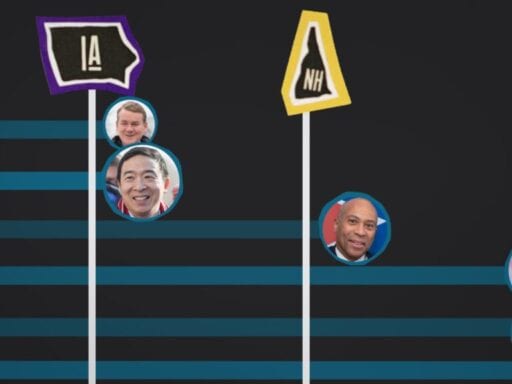Why does America’s system for picking the president start in Iowa?
Before Americans even vote on the next president in November, both major political parties have primary elections to decide the nominee. In 2020, that process consists of 64 different contests, held on 22 different days from February to June.
And for the past 50 years, this process has started in Iowa, moved to New Hampshire, and then headed to other small states on this slog to the conventions. How did this become our system?
We can thank the protests at the 1968 Democratic Convention. Then, only a few states held primaries, and party leaders chose the party’s presidential nominee. That year, young Democrats favored anti-war candidates. But at the convention, the party chose a pro-war candidate: then-Vice President Hubert Humphrey, who wasn’t even on a ballot in the primaries.
After those protests, the Democrats — and the Republicans soon after — changed their systems so every state holds a primary. They wanted the voters to actually have a voice.
Now we have what’s called a “sequential primary system.” Starting in small states, the number of candidates gets winnowed down to just a few for the rest of the country. But those first states with the most influence, like Iowa, weren’t chosen by the party on purpose. It was just random.
A disastrous Iowa caucus in 2020 has people questioning this system. So how could it be better?
Watch the video above to learn more. You can find this video and all of Vox’s videos on YouTube. And if you’re interested in supporting our video journalism, you can become a member of the Vox Video Lab on YouTube.
Author: Madeline Marshall
Read More



